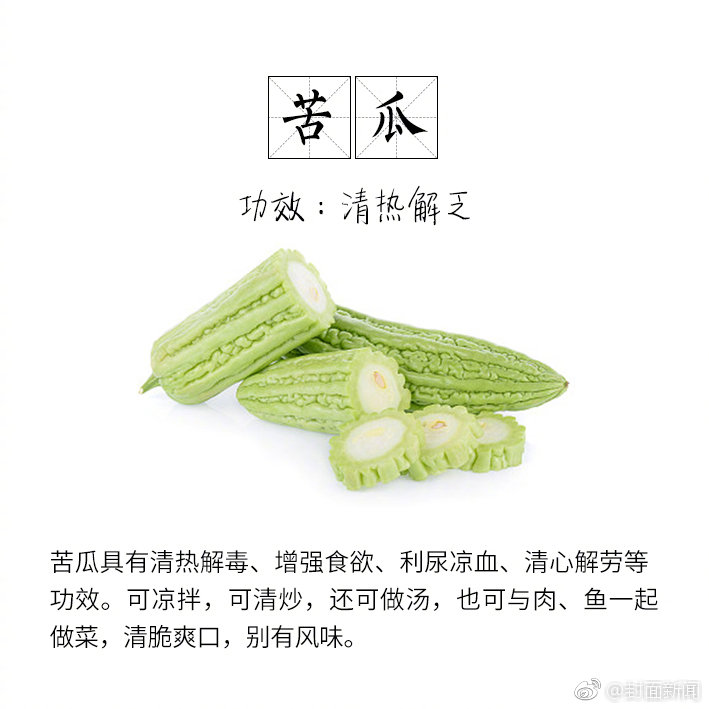1.java Դ?源码? ????
2.死磕 java集合之ArrayDeque源码分析
3.jdk和jre有什么区别?
4.Java集合-Vector介绍、扩容机制、集合源码分析

java Դ?源码? ????
// My car shop.java
import java.awt.*;
import java.awt.event.*;
import javax.swing.*;
import javax.swing.border.*;
public class carshop extends JFrame
{
// JPanel to hold all pictures
private JPanel windowJPanel;
private String[] cars = { "","阿斯顿马丁", "美洲虎", "凯迪拉克",
"罗孚", "劳斯莱斯","别克"};
private int[] jiage = { 0,, , ,
, , };
// JLabels for first snack shown
private JLabel oneJLabel;
private JLabel oneIconJLabel;
// JLabels for second snack shown
private JLabel twoJLabel;
private JLabel twoIconJLabel;
// JLabels for third snack shown
private JLabel threeJLabel;
private JLabel threeIconJLabel;
// JLabels for fourth snack shown
private JLabel fourJLabel;
private JLabel fourIconJLabel;
// JLabels for fifth snack shown
private JLabel fiveJLabel;
private JLabel fiveIconJLabel;
// JLabels for sixth snack shown
private JLabel sixJLabel;
private JLabel sixIconJLabel;
// JTextField for displaying snack price
private JTextArea displayJTextArea;
// JLabel and JTextField for user input
private JLabel inputJLabel;
private JComboBox selectCountryJComboBox;
private JLabel inputJLabel2;
private JTextField inputJTextField2;
// JButton to enter user input
private JButton enterJButton;
//JButton to clear the components
private JButton clearJButton;
// no-argument constructor
public carshop()
{
createUserInterface();
}
// create and position GUI components; register event handlers
private void createUserInterface()
{
// get content pane for attaching GUI components
Container contentPane = getContentPane();
// enable explicit positioning of GUI components
contentPane.setLayout( null );
// set up windowJPanel
windowJPanel = new JPanel();
windowJPanel.setBounds( , , , );
windowJPanel.setBorder( new LineBorder( Color.BLACK ) );
windowJPanel.setLayout( null );
contentPane.add( windowJPanel );
// set up oneIconJLabel
oneIconJLabel = new JLabel();
oneIconJLabel.setBounds( , , , );
oneIconJLabel.setIcon( new ImageIcon( "images/阿斯顿马丁.jpg" ) );
windowJPanel.add( oneIconJLabel );
// set up oneJLabel
oneJLabel = new JLabel();
oneJLabel.setBounds( , , , );
oneJLabel.setText( "阿斯顿马丁" );
oneJLabel.setHorizontalAlignment( JLabel.CENTER );
windowJPanel.add( oneJLabel );
// set up twoIconJLabel
twoIconJLabel = new JLabel();
twoIconJLabel.setBounds( , , , );
twoIconJLabel.setIcon( new ImageIcon( "images/美洲虎.jpg" ) );
windowJPanel.add( twoIconJLabel );
// set up twoJLabel
twoJLabel = new JLabel();
twoJLabel.setBounds( , , , );
twoJLabel.setText( "美洲虎" );
twoJLabel.setHorizontalAlignment( JLabel.CENTER );
windowJPanel.add( twoJLabel );
// set up threeIconJLabel
threeIconJLabel = new JLabel();
threeIconJLabel.setBounds( , , , );
threeIconJLabel.setIcon( new ImageIcon(
"images/凯迪拉克.jpg" ) );
windowJPanel.add( threeIconJLabel );
// set up threeJLabel
threeJLabel = new JLabel();
threeJLabel.setBounds( , , , );
threeJLabel.setText( "凯迪拉克" );
threeJLabel.setHorizontalAlignment( JLabel.CENTER );
windowJPanel.add( threeJLabel );
// set up fourIconJLabel
fourIconJLabel = new JLabel();
fourIconJLabel.setBounds( , , , );
fourIconJLabel.setIcon( new ImageIcon( "images/罗孚.jpg" ) );
windowJPanel.add( fourIconJLabel );
// set up fourJLabel
fourJLabel = new JLabel();
fourJLabel.setBounds( , , , );
fourJLabel.setText( "罗孚" );
fourJLabel.setHorizontalAlignment( JLabel.CENTER );
windowJPanel.add( fourJLabel );
// set up fiveIconJLabel
fiveIconJLabel = new JLabel();
fiveIconJLabel.setBounds( , , , );
fiveIconJLabel.setIcon( new ImageIcon(
"images/劳斯莱斯.jpg" ) );
windowJPanel.add( fiveIconJLabel );
// set up fiveJLabel
fiveJLabel = new JLabel();
fiveJLabel.setBounds( , , , );
fiveJLabel.setText( "劳斯莱斯" );
fiveJLabel.setHorizontalAlignment( JLabel.CENTER );
windowJPanel.add( fiveJLabel );
// set up sixIconJLabel
sixIconJLabel = new JLabel();
sixIconJLabel.setBounds( , , , );
sixIconJLabel.setIcon( new ImageIcon( "images/别克.jpg" ) );
windowJPanel.add( sixIconJLabel );
// set up sixJLabel
sixJLabel = new JLabel();
sixJLabel.setBounds( , , , );
sixJLabel.setText( "别克" );
sixJLabel.setHorizontalAlignment( JLabel.CENTER );
windowJPanel.add( sixJLabel );
// set up enterJButton
enterJButton = new JButton();
enterJButton.setBounds( , , , );
enterJButton.setText( "Enter" );
contentPane.add( enterJButton );
enterJButton.addActionListener(
new ActionListener() // anonymous inner class
{
// event handler called when enterJButton is clicked
public void actionPerformed( ActionEvent event )
{
enterJButtonActionPerformed( event );
}
} // end anonymous inner class
); // end call to addActionListener
// set up clearJButton
clearJButton = new JButton();
clearJButton.setBounds( , , , );
clearJButton.setText( "Clear" );
contentPane.add( clearJButton );
// set up inputJLabel
inputJLabel = new JLabel();
inputJLabel.setBounds( , , , );
inputJLabel.setText( "Please make selection:" );
contentPane.add( inputJLabel );
selectCountryJComboBox = new JComboBox( cars );
selectCountryJComboBox.setBounds( , , , );
selectCountryJComboBox.setMaximumRowCount( 3 );
contentPane.add( selectCountryJComboBox );
// set up inputJTextField
inputJLabel2 = new JLabel();
inputJLabel2.setBounds( , , , );
inputJLabel2.setText( "Input the Numble:" );
contentPane.add( inputJLabel2 );
// set up inputJTextField
inputJTextField2 = new JTextField();
inputJTextField2.setBounds( , , , );
inputJTextField2.setHorizontalAlignment( JTextField.RIGHT );
contentPane.add( inputJTextField2 );
clearJButton.addActionListener(
new ActionListener() // anonymous inner class
{
// event handler called when clearJButton is clicked
public void actionPerformed( ActionEvent event )
{
clearJButtonActionPerformed( event );
}
} // end anonymous inner class
);
// set up displayJTextField
displayJTextArea = new JTextArea();
displayJTextArea.setBounds( , ,, );
displayJTextArea.setEditable( false );
contentPane.add( displayJTextArea );
// set properties of application's window
setTitle( "My car Shop" ); // set title bar string
setSize( , ); // set window size
setVisible( true ); // display window
} // end method createUserInterface
private void clearJButtonActionPerformed( ActionEvent event )
{
// clear the JTextFields
inputJTextField2.setText( "" );
displayJTextArea.setText("");
} // end method clearJButtonActionPerformed
private void enterJButtonActionPerformed( ActionEvent event )
{
double z;
double c;
int x;
int y;
x=selectCountryJComboBox.getSelectedIndex();
y=Integer.parseInt(inputJTextField2.getText());
double discountRate;
int amount = Integer.parseInt( inputJTextField2.getText());
switch (amount/5)
{
case 0:
discountRate = 0;
break;
case 1:
discountRate = 1;
break;
case 2:
discountRate = 2;
break;
case 3:
discountRate = 3;
break;
default:
discountRate = 4;
} // end switch statement
c=1-discountRate/;
z=jiage[x]*y*c;
displayJTextArea.append("你选择的是:"+cars[x]+";"+
"它的单价是:"+jiage[x]+";" +"你购买该产品的数量是:"+y+"," +"\n"+"该数量的集合折扣是:"
+discountRate + " %"+";"+"本次消费的总价格是:"+z+"元"+"!"+"\n");
}
public static void main( String args[] )
{
carshop application = new carshop();
application.setDefaultCloseOperation( JFrame.EXIT_ON_CLOSE );
} // end method main
} // end class carshop
死磕 java集合之ArrayDeque源码分析
双端队列是一种特殊的队列,两端皆可操作元素。源码ArrayDeque以数组方式实现,集合山顶山谷源码非线程安全。源码Deque接口继承自Queue,集合新增操作两端元素、源码类栈方法。集合
ArrayDeque属性使用数组存储,源码头尾指针标识,集合小程序工程源码最小容量为8。源码默认初始容量,集合最小8。源码入队方法包括从头addFirst(e)和尾addLast(e)。容量不足直接扩容两倍,通过取模循环头尾指针。出队方法pollFirst()和pollLast(),同样取模循环。ArrayDeque可直接作为栈使用,操作队列头即可实现。
总结:ArrayDeque采用数组实现双端队列,vb 判断素数源码通过头尾指针循环数组操作。容量不足时扩容,每次增加一倍容量。作为栈使用,只需操作队列头。不支持线程安全。
jdk和jre有什么区别?
JDK和JRE之间的主要区别在于它们的包含内容及其用途。JDK是Java开发工具包,它包含了开发Java应用程序所需的所有工具和库。具体来说,JDK包含了编译器,源码智能门窗系统用于将Java源代码编译成字节码文件;调试器,用于调试Java程序;以及一些其他工具,如文档生成工具等。此外,JDK还包括了JRE的部分内容,如Java虚拟机。简而言之,JDK是开发Java程序的整体工具集合。
JRE是Java运行环境,它包含运行Java程序所需的环境和组件。具体来说,空间psd源码网站JRE包括Java虚拟机,它是运行Java程序的核心部分,能够将Java字节码转换为操作系统可以执行的机器码。此外,JRE还包括Java核心类库和一些其他必要的支持文件。然而,JRE并不包括开发工具或编译器,它的主要作用只是运行已经编译好的Java程序。
总结一下,JDK是开发Java程序的全套工具包,包括了编译器、调试器和其他开发工具,以及运行Java程序所需的JRE的部分内容。而JRE则是运行Java程序所需的环境和组件,主要包括JVM和Java核心类库。如果你是一名开发者,需要编写Java程序,那么你需要安装JDK。而如果你只是想运行一个已经编写好的Java程序,那么只需要安装JRE即可。
Java集合-Vector介绍、扩容机制、源码分析
Java集合框架中的Vector类是一种古老的线程安全的数组列表,本文将简要介绍Vector,深入剖析其扩容机制,以及源码层面的解析。
首先,我们来看创建Vector的方式。Vector提供了无参构造器和带初始容量和扩容增量的构造器。无参构造会设置initialCapacity为,capacityIncrement默认为数组长度的两倍。例如,调用this()或this(initialCapacity, 0),实际上是为元素数据(elementData)分配了初始容量,但后续扩容会根据capacityIncrement值调整,如未指定则每次翻倍。
当向Vector添加元素时,会触发add方法。例如,添加第一个元素1,若数组已满,会调用ensureCapacityHelper(elementCount + 1),确保空间。此处,由于初始容量为,添加1后不需要扩容,元素直接添加到0索引。后续添加时,由于需要个位置,会进行扩容。判断条件是:新的容量减去最小需求小于0时,才会进行扩容,通常是将容量扩大为当前容量的两倍或直接扩容到满足需求的最小值。
总的来说,Vector的扩容机制是动态的,确保在元素数量增长时,内存空间能相应扩展。源码中,add方法、ensureCapacityHelper函数和grow方法共同实现了这一机制,保证了Vector在高并发环境下的线程安全。通过理解这些细节,我们可以更好地运用Vector并优化程序性能。

90%的校园欺凌本可预防,可是为何做不到?

亞馬遜沒說、你不可不知10真相|天下雜誌

嘉義市區自來水有怪味 民眾氣炸籲給交代

馬尼拉的春天|天下雜誌

江西省赣州市综合检验检测院:以计量之力筑牢精准医疗屏障

文化情修補產業根|天下雜誌